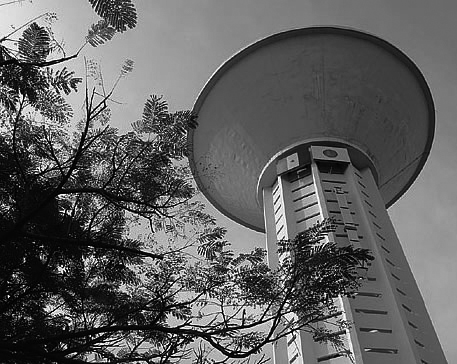Japan's Official Development Assistance White Paper 2009
(3) Water and Sanitation
Water and sanitation are serious issues that concern all people's lives. Approximately 884 million people worldwide in 2006 had no access to safe drinking water, including piped water or wells, and approximately 2.5 billion people around the world have no access to basic sanitation facilities such as sewage systems (Note 18). The problem of water and sanitation claims the lives of approximately 1.5 million young children every year (Note 19).
Notes:
(18) Source: WHO/UNICEF, Progress on Drinking-water and Sanitation, 2008.
(19) UNICEF, Progress for Children: A Report Card on Water and Sanitation, 2006.
<Japan's Efforts>
At the Fourth World Water Forum in 2006, Japan announced the Water and Sanitation Broad Partnership Initiative (WASABI). Japan has the largest aid disbursements in the water and sanitation sector in the world, and provides comprehensive support for both "soft" and "hard" aspects by utilizing its wealth of experience, knowledge, and technology concerning this sector. Such support includes promotion of integrated water resource management, provision of safe drinking water and sanitation support, water use for promotion of increasing food production, water pollution prevention and ecosystem conservation, and mitigating damage from water-related disasters. At TICAD IV in May 2008, Japan announced support measures such as the fostering of human resources related to the development of water supply and sanitation facilities and water resource management. It also announced the dispatch of the Water Security Action Team (W-SAT)(Note 20). Moreover, Japan took up the water and sanitation issue for the first time in about five years at the G8 Hokkaido Toyako Summit in July 2008. It affirms the importance of circulatory water cycle management, and facilitates the sustainable use of water resources by promoting it.

Water tower in Senegal (Photo: Kenshiro Imamura/JICA)
Notes:
(20) See "Disbursements to the African (Sub Saharan) Region" (page 82) for details on W-SAT.
Iquitos Sewerage Improvement and Expansion Project (Peru)
Iquitos in Loreto Province is a major city in the Amazon region which is expected to undergo an increase in its amount of sewage due to an increase in its amount of water supply used. The city has no sewage treatment plant, and its sewage connection rate remains at roughly 70%. Because of this, not only does untreated wastewater flow into the Amazon River, but the situation is such that during the rainy season rain water mixed with wastewater overflows into the city area. Japan aims to contribute to improving the sanitary conditions and living environment for the residents in this region by providing support for the development of a sewage plant through an ODA loan worth approximately ¥6.6 billion. The loan funds involved in this project have been appropriated for things like a sewage treatment plant, the construction of a pump station, the development of a sewer network, and consulting and service fees.
Baghdad Sewerage Facilities Improvement Project (Iraq)
Basic infrastructure functions like water supply and sewage have declined substantially in Iraq owing to repeated conflicts. What is more, the deterioration of facilities and equipment has proceeded because proper operation and maintenance has not been carried out for many years. Therefore, Japan provides support for basic design through an ODA loan worth approximately ¥2.1 billion, for the expansion of sewage treatment plants and the repair of old pump station equipment in the Karkh District of Baghdad. Japan aims at improving the sanitary environment in the city area by improving the water quality of the Tigris River and mitigating flooding.
